urmom
Well-Known Member
Hello everyone in 420 land! I have a bit of growing experience, both indoor and out. And I have been experimenting with hashmaking for the last year or so...Both solvent based and ice water methods. Today I would like to share my recent adventure into dry sifting.
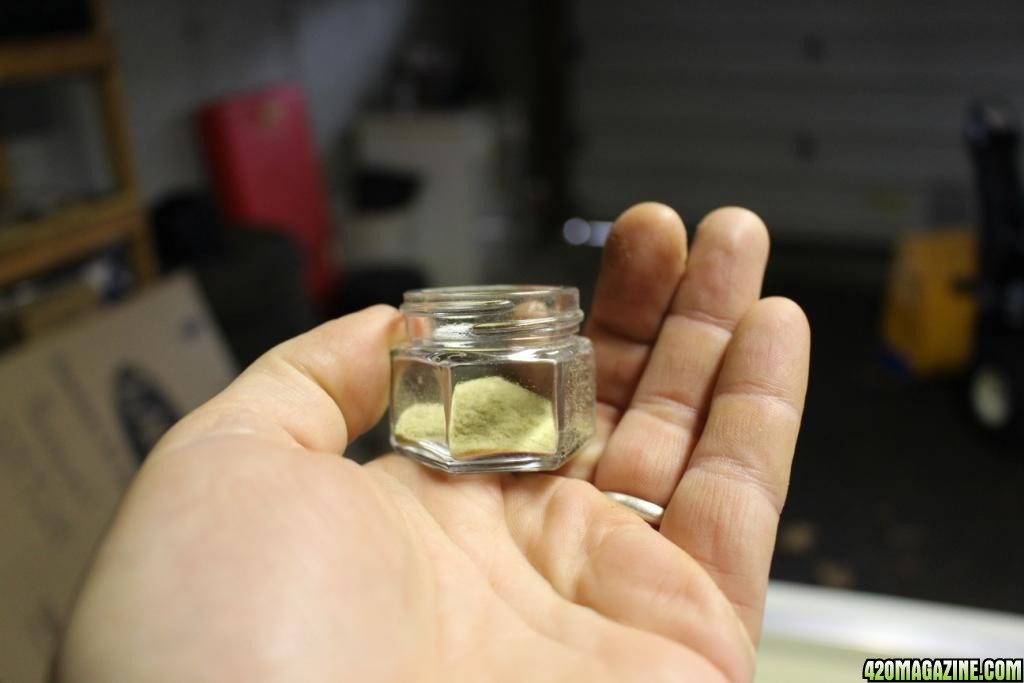
To start, you will need some screens, some starting material (flower/trim/kief), magnifying glass of some kind (I use a lighted pocket microscope), at least one brush, card, etc to move the material around. As you can see, I use a plethora of different cards and brushes for different applications.
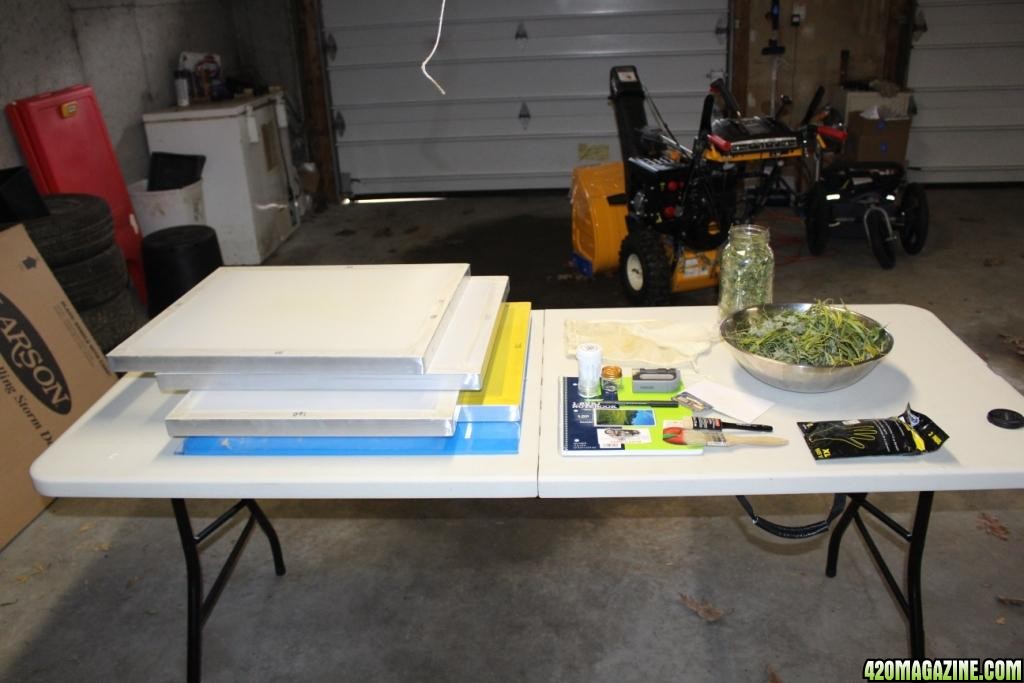
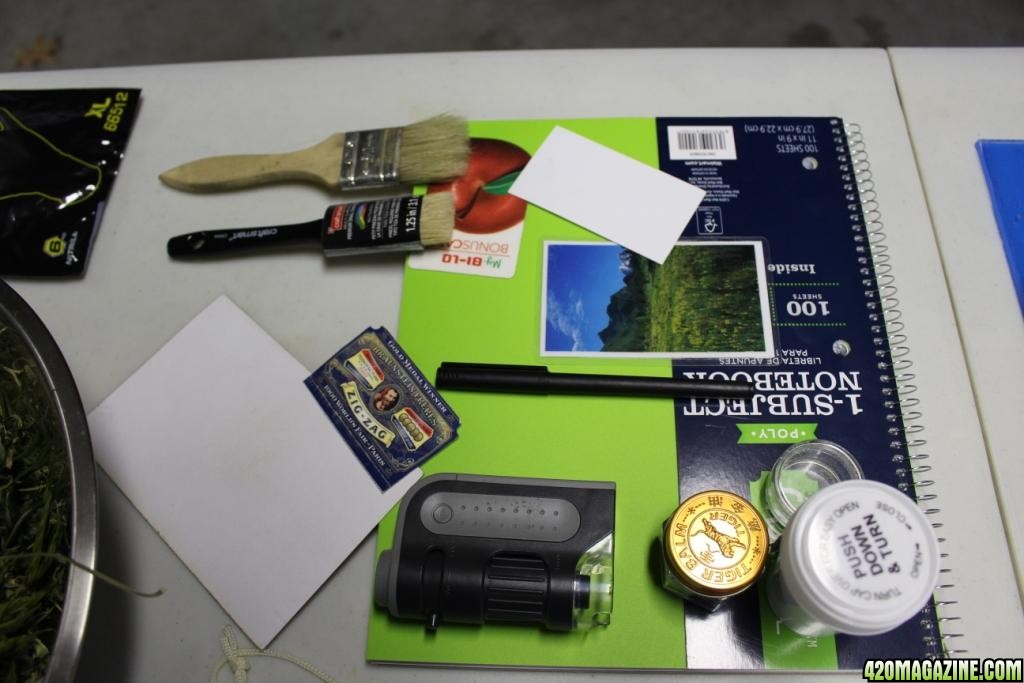
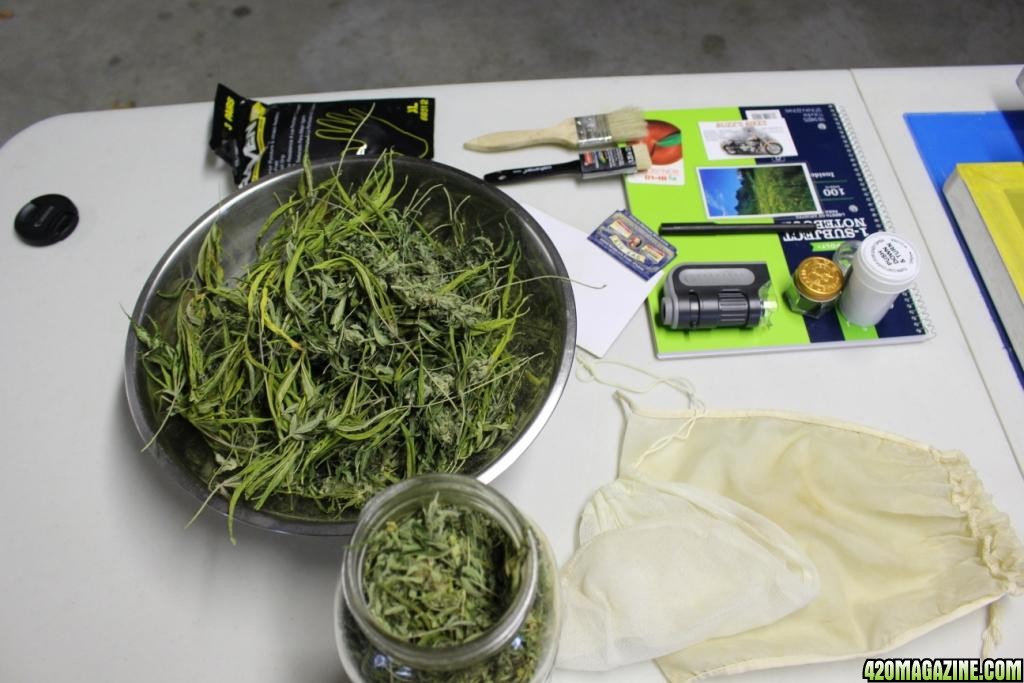
You obviously will need some sort of vessel to collect the resin after the process is complete (small glass jar, medtainer etc), and a vessel to collect the "used material" (I like to use the same SS bowl...)
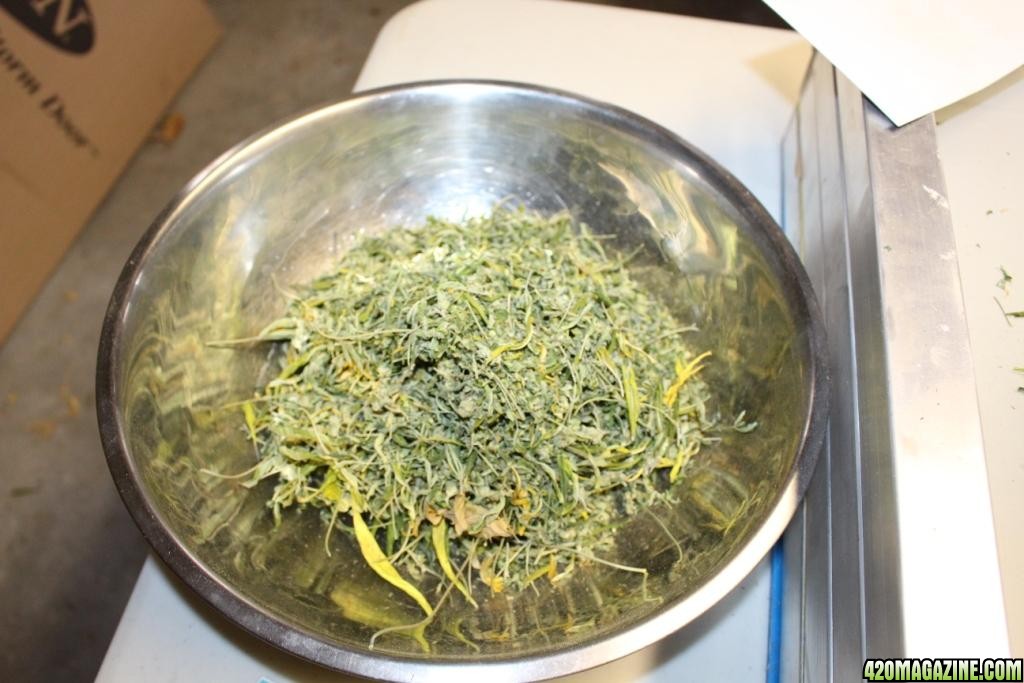
I also have some extra mesh bags from my days brewing beer (hops bags) these work good if you would like to get every last bit out, I prefer to bubble or oil my second run material.
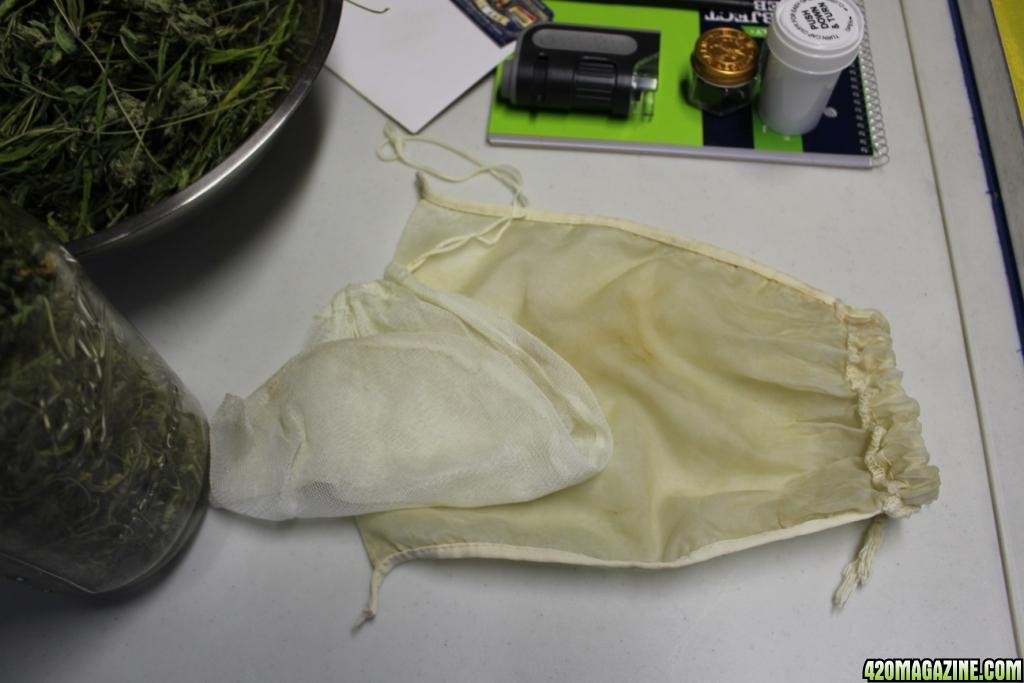
Lets talk screens for a minute...
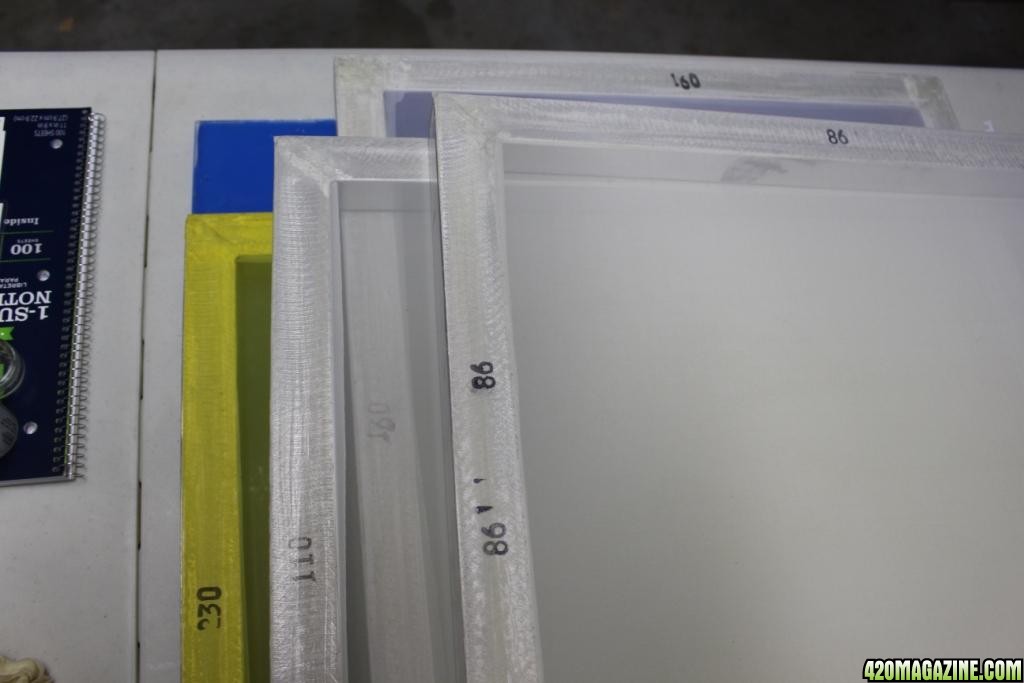
I ordered mine online and specified what i wanted made and got them for about 1/3 the costs of "well known retailers"...I would however, like to give a huge SHOUTOUT to Bubbleman for all the help in perfecting my processes and his videos online are amazing to assist you if you so choose. I have 4 screens that are measured in Lines Per Inch (LPI), some people use Micron and that works too but mine are LPI, so that is what i will use here...
I have a "work screen" (86 LPI/appx 170 micron) that I start all my material on.
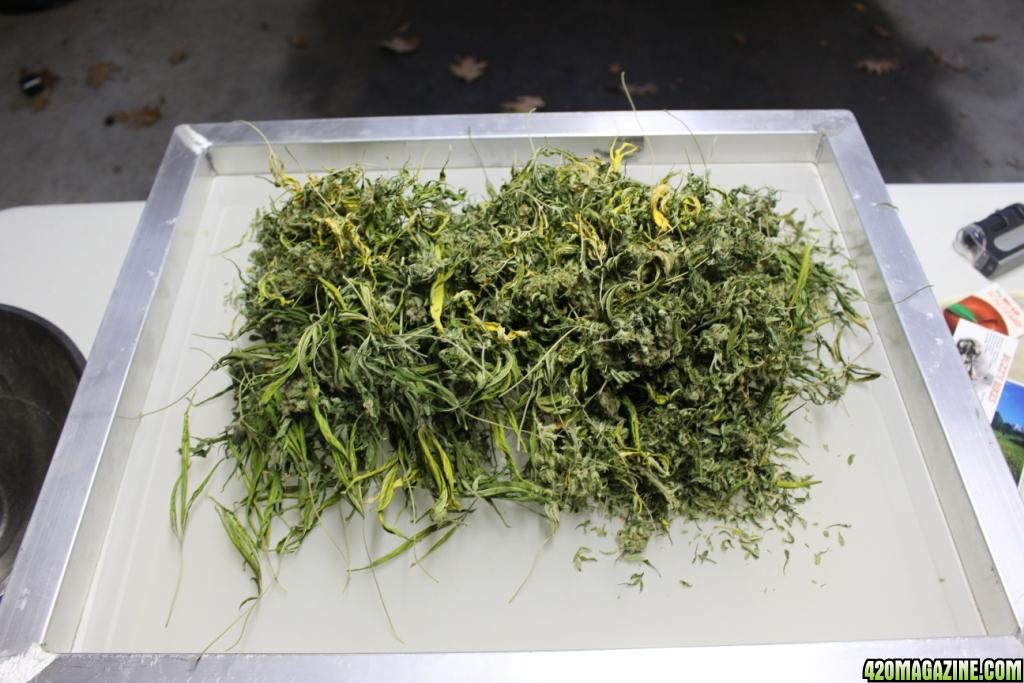
Followed by a second contaminate screen (110 LPI/ap 140 micron) to pull hair, leaf that somehow got passed, dust etc; next are the "catch screens" and both end up with gold on them.
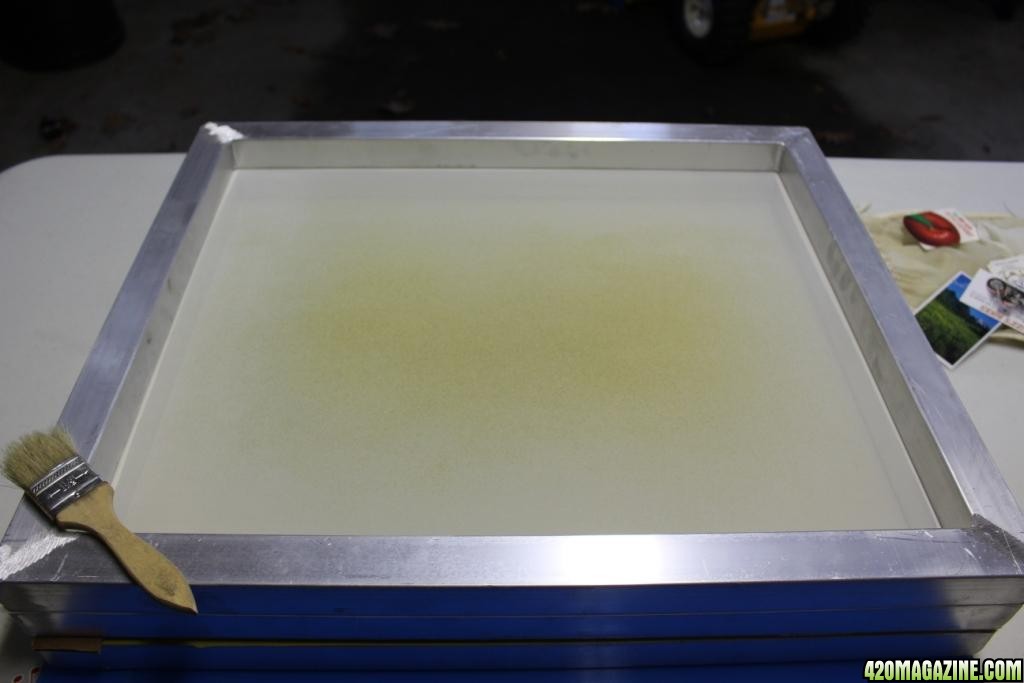
All of this needs to be worked through with cards and brushes. A quick check with the scope and you will see how much is really trichomes or just contaminate.
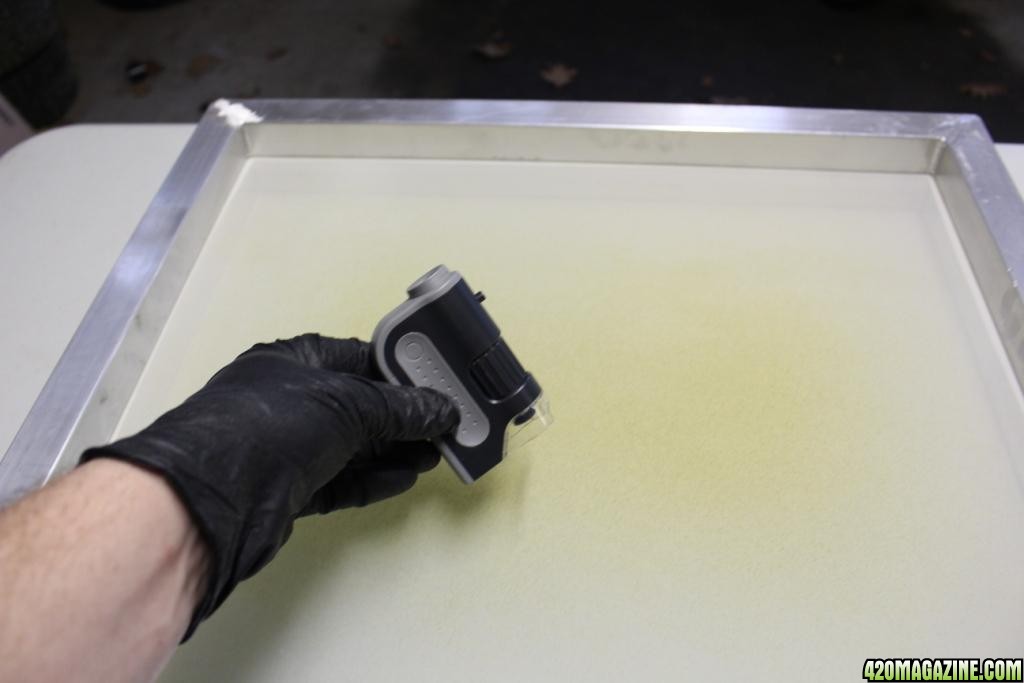
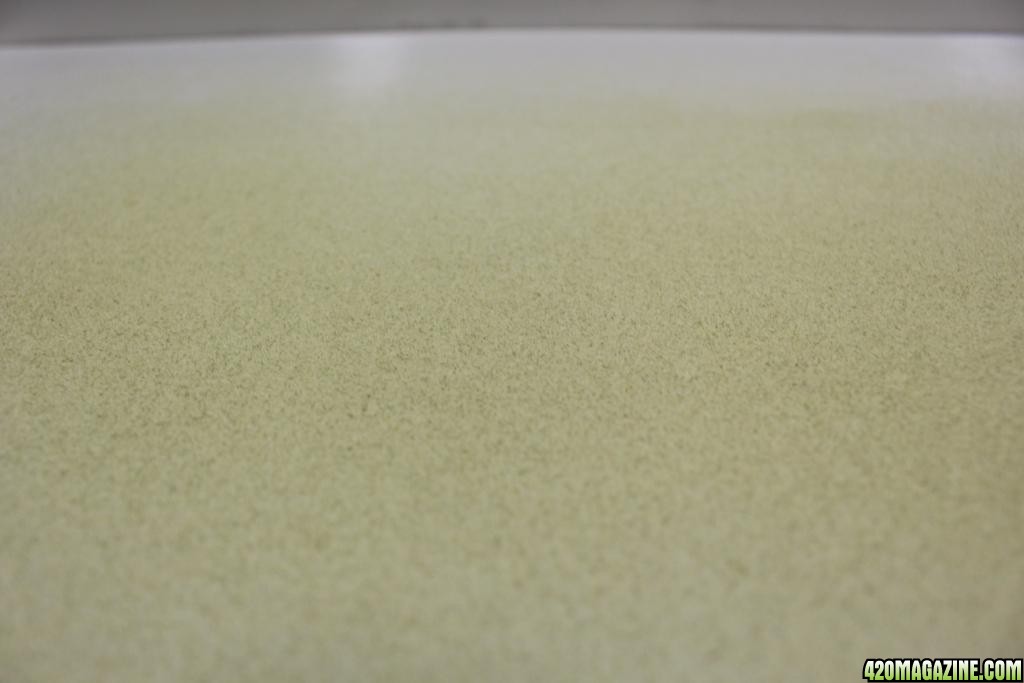
This is dependent on how much you work the material to start with...but lets not get ahead of ourselves just yet...
So here we go...I started with 100 grams of bone dry material
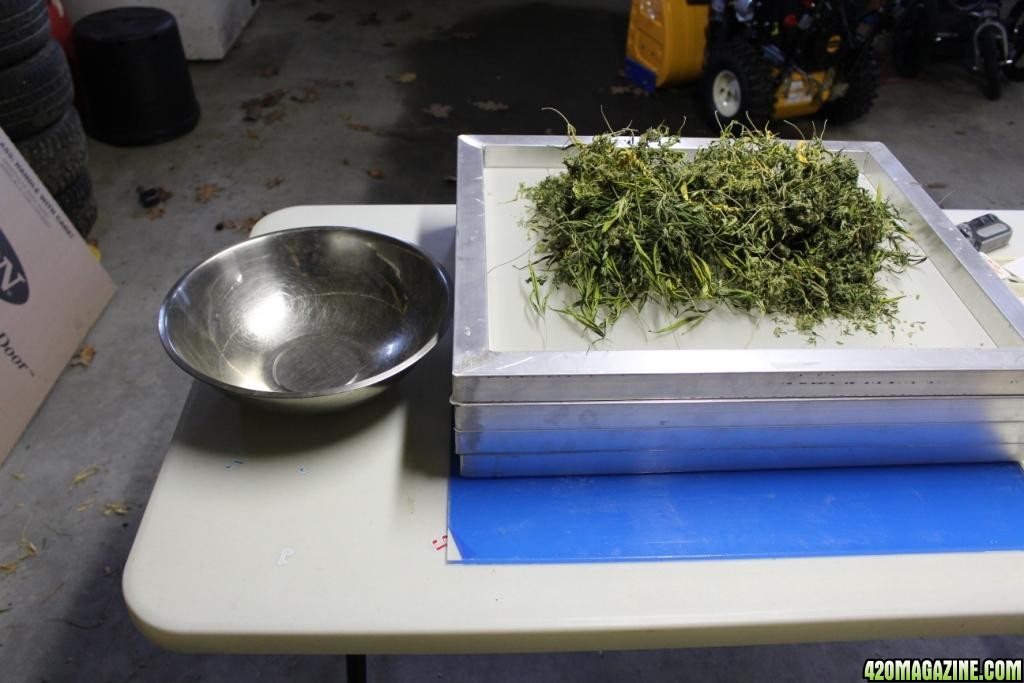
and pushed all of it to one side to start working about a big handful at a time...
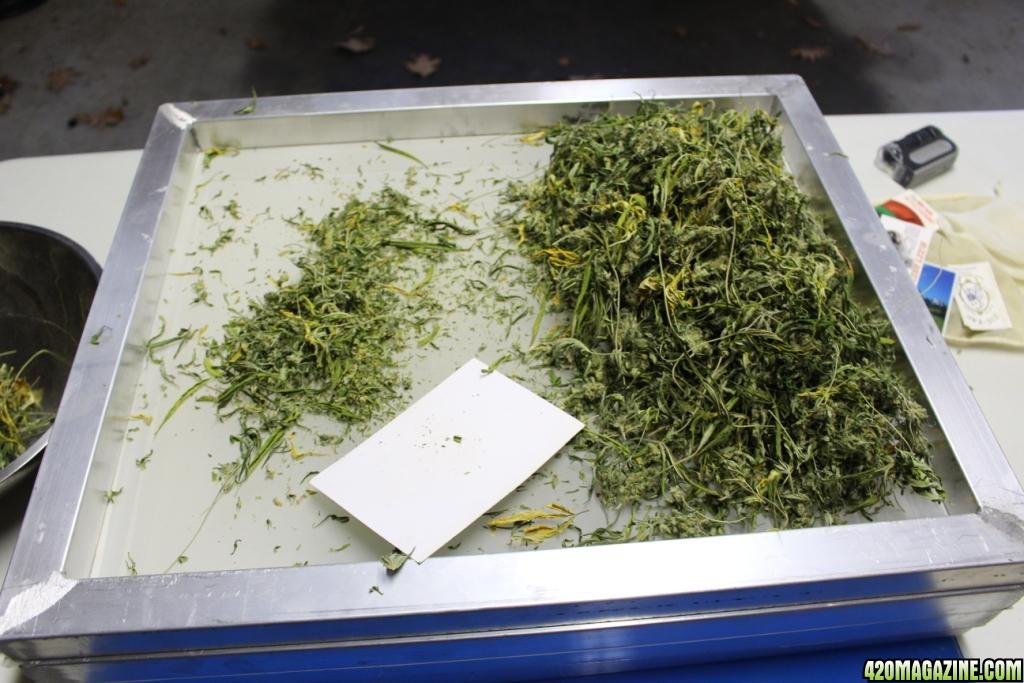
after pulling most of the trash out (big fan leaves that slipped by, sticks from the flowers and small branches that were doomed to hash processing)
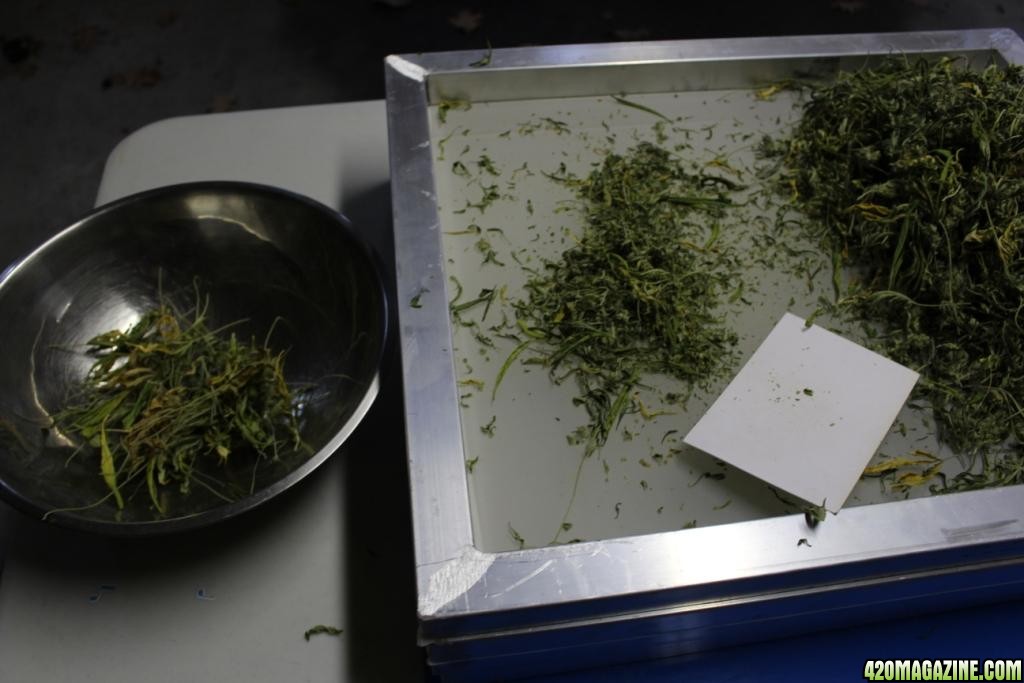
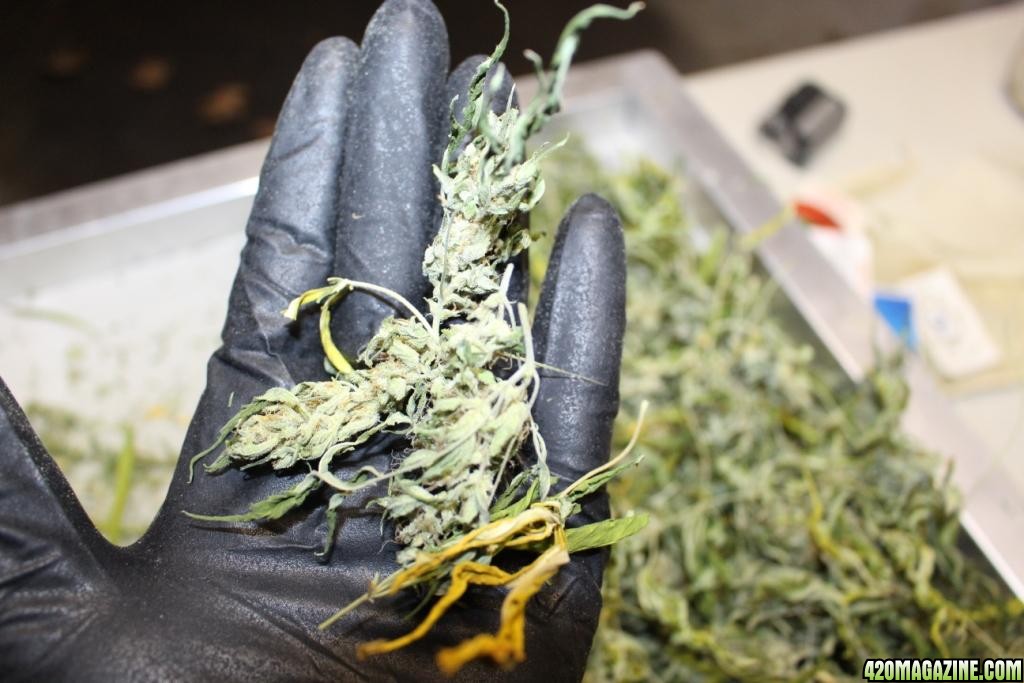
We lightly breakup the bigger buds and get everything down to what I consider "rough pipe material"...
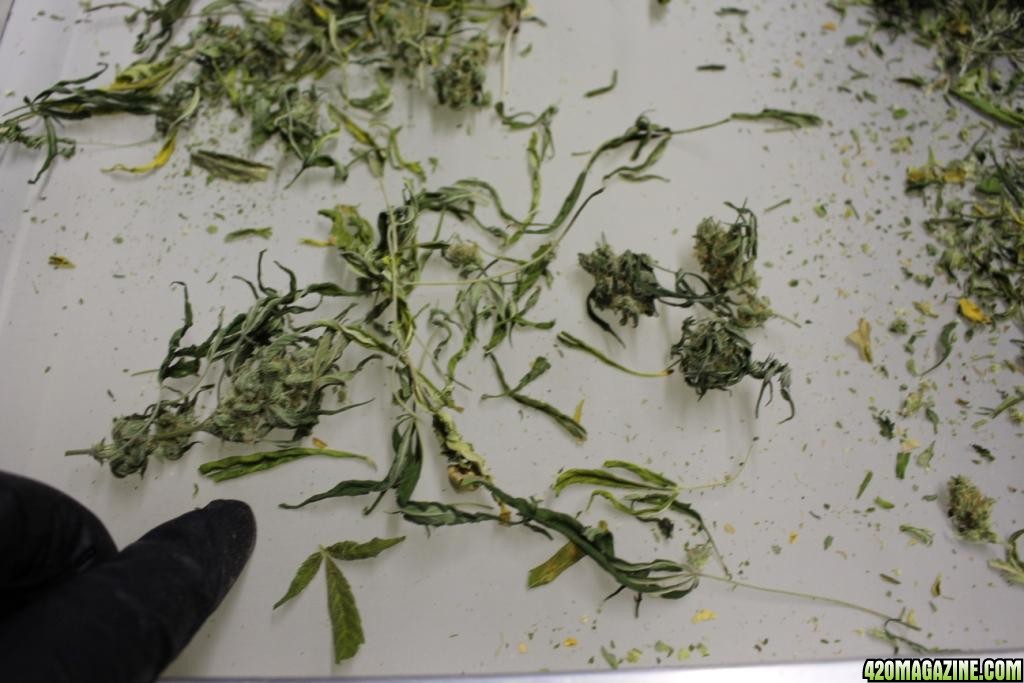
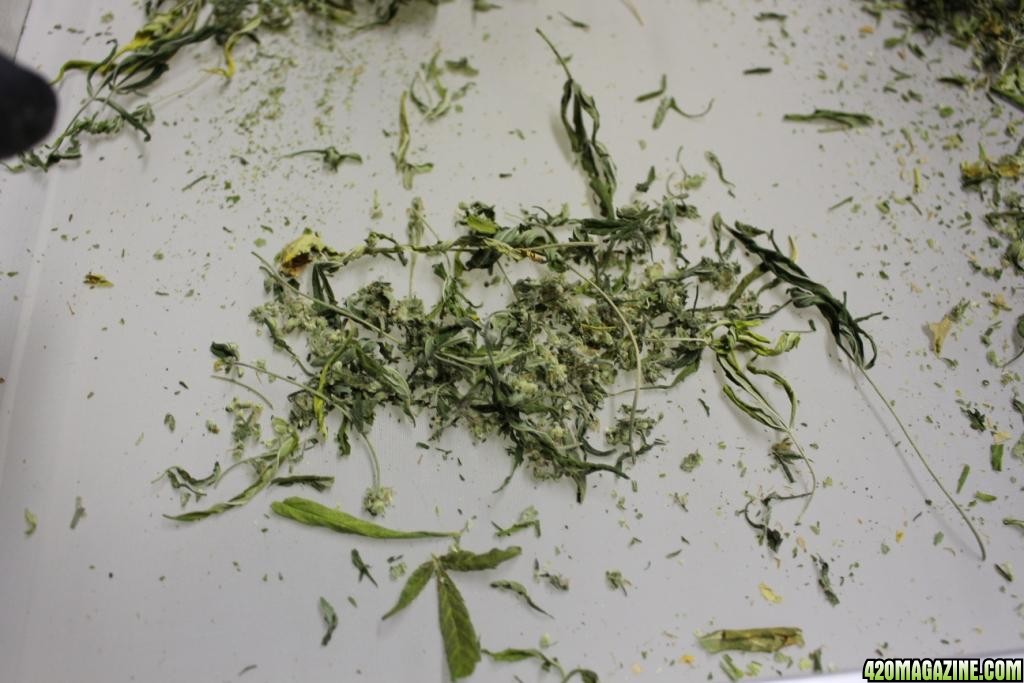
This all gets lifted and dropped repeatedly in various ways, but always very lightly and never pressed against the top screen (86 LPI)
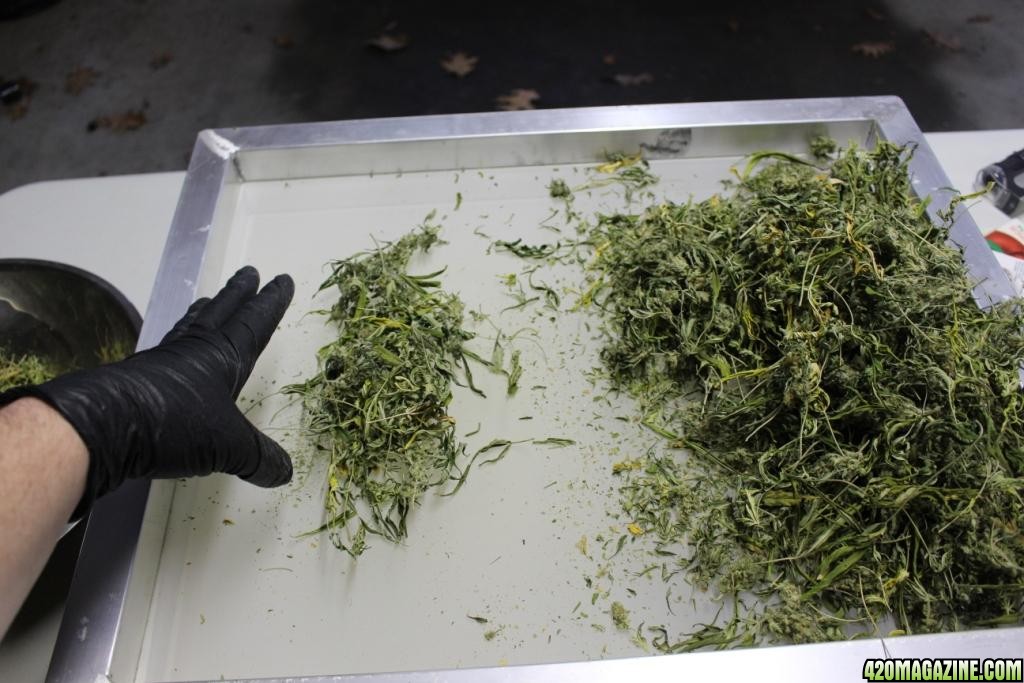
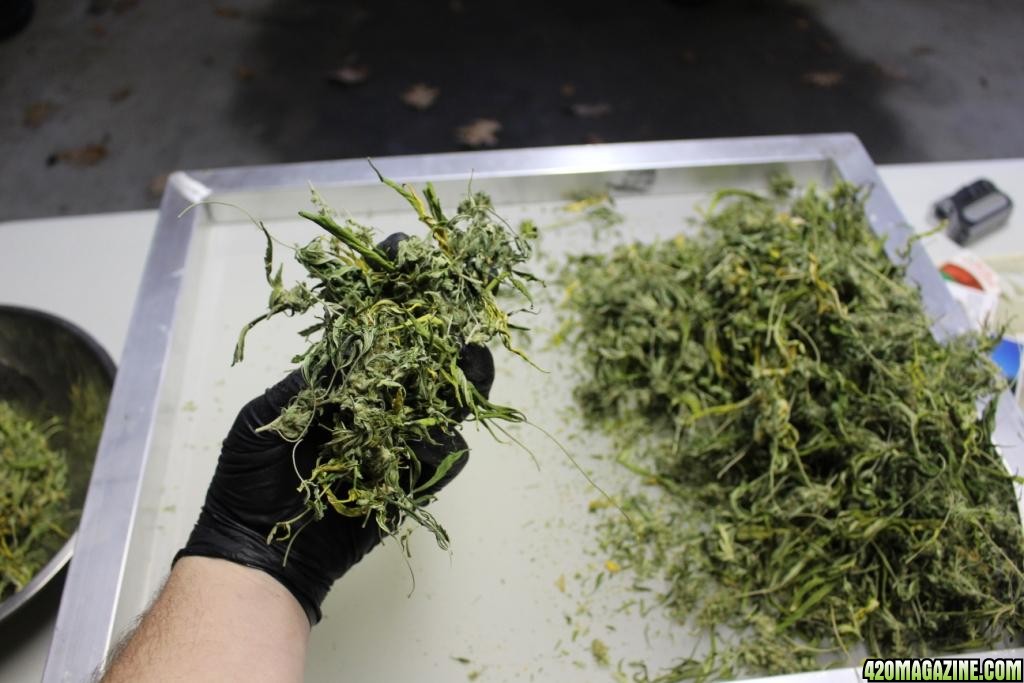
You do this over and over again for about half the material, tossing each handful into the "trash bowl" after working it a few, half a dozen times maybe, over this screen...then you push it all the the left and repeat on the opposite side of your screen...one handful at a time, always very gentle and never too much at a time, less is more...
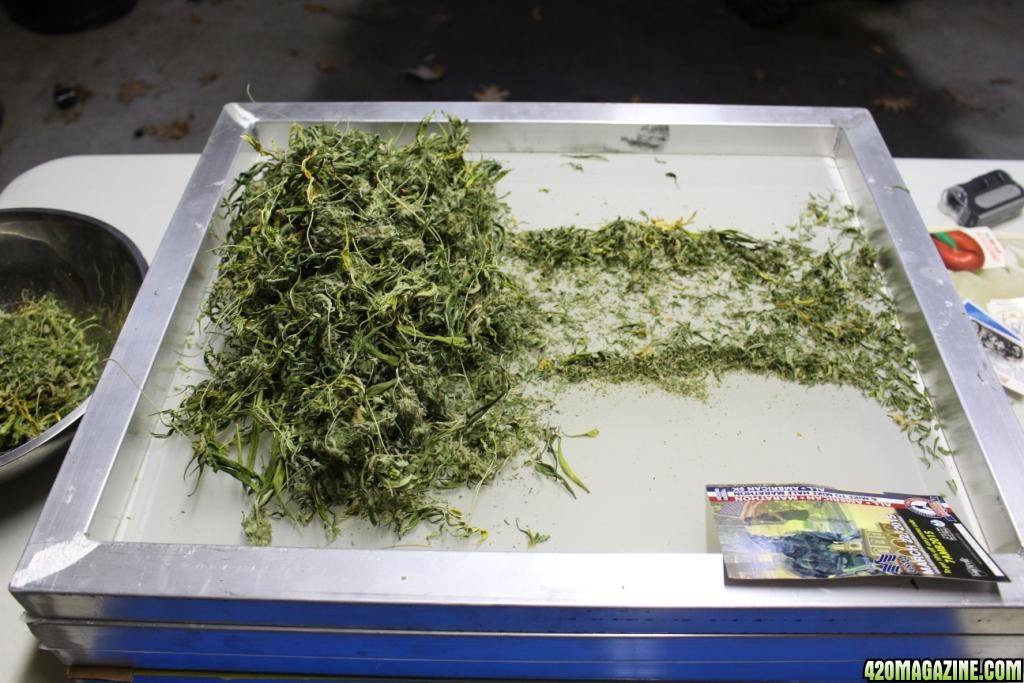
Once you are finished with however much material you have, or can handle at a time on your screens...You get everything off...
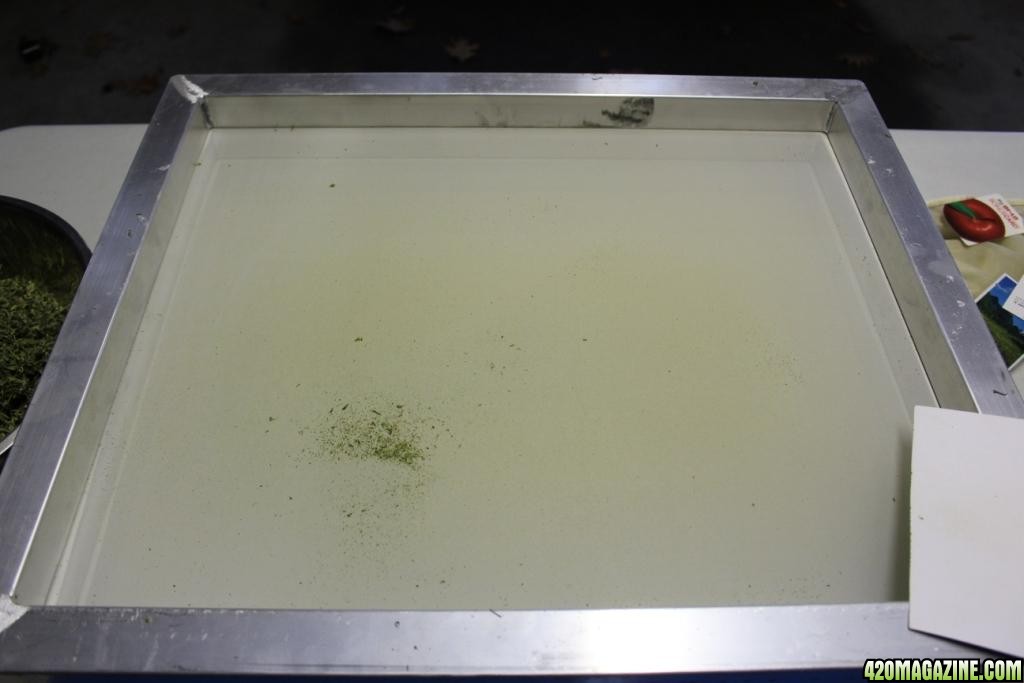
And then you start using the various cards and brushes at your disposal to GENTLY assist the trichomes through the next screen (110 LPI).
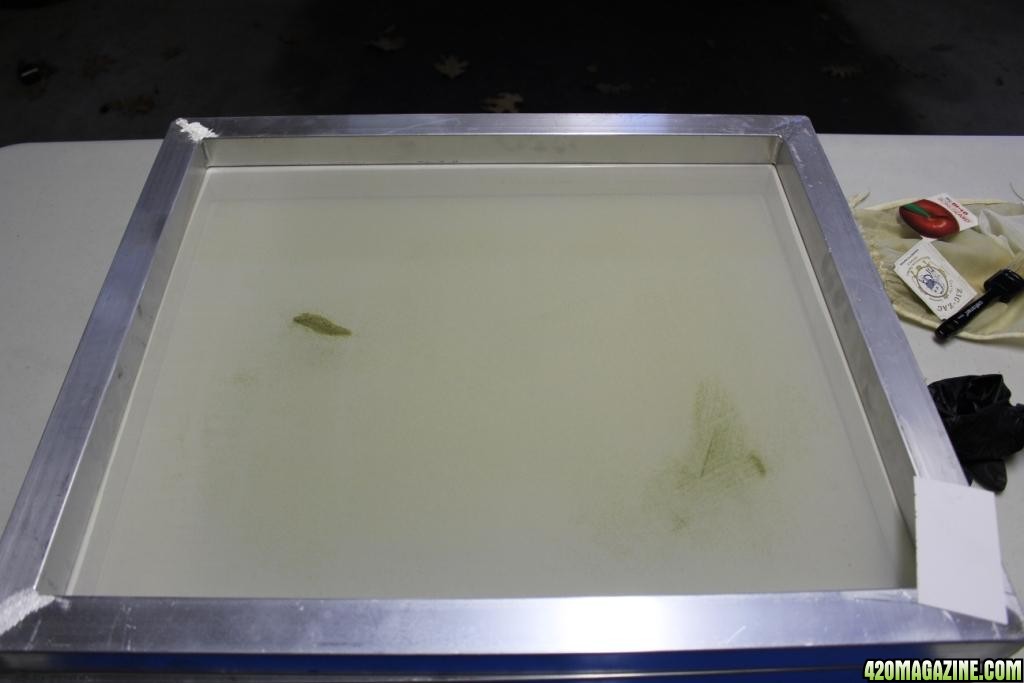
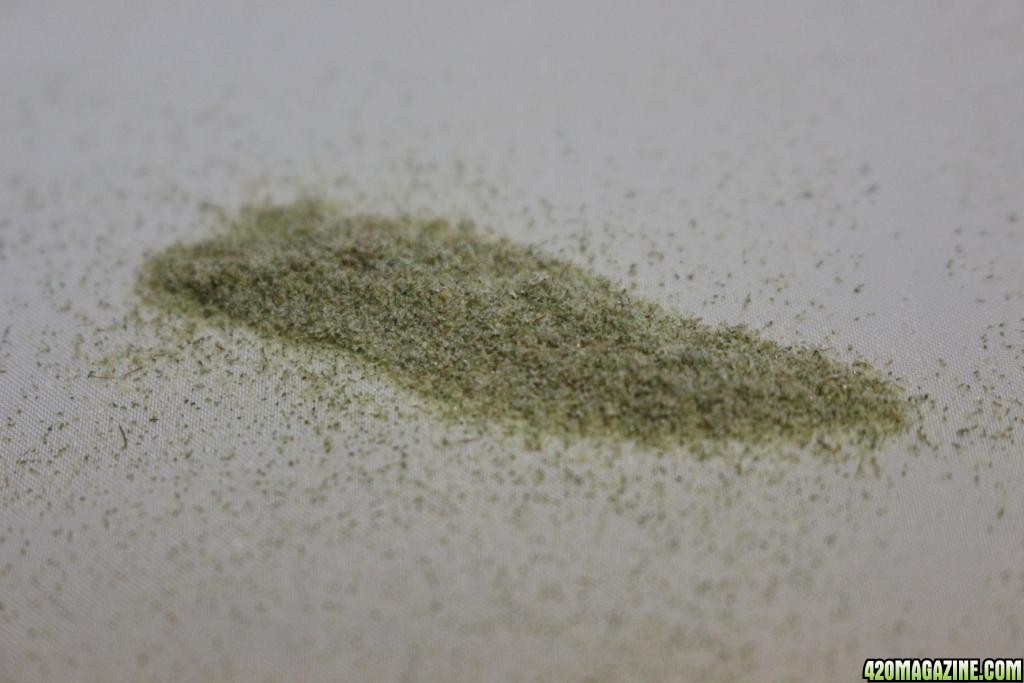
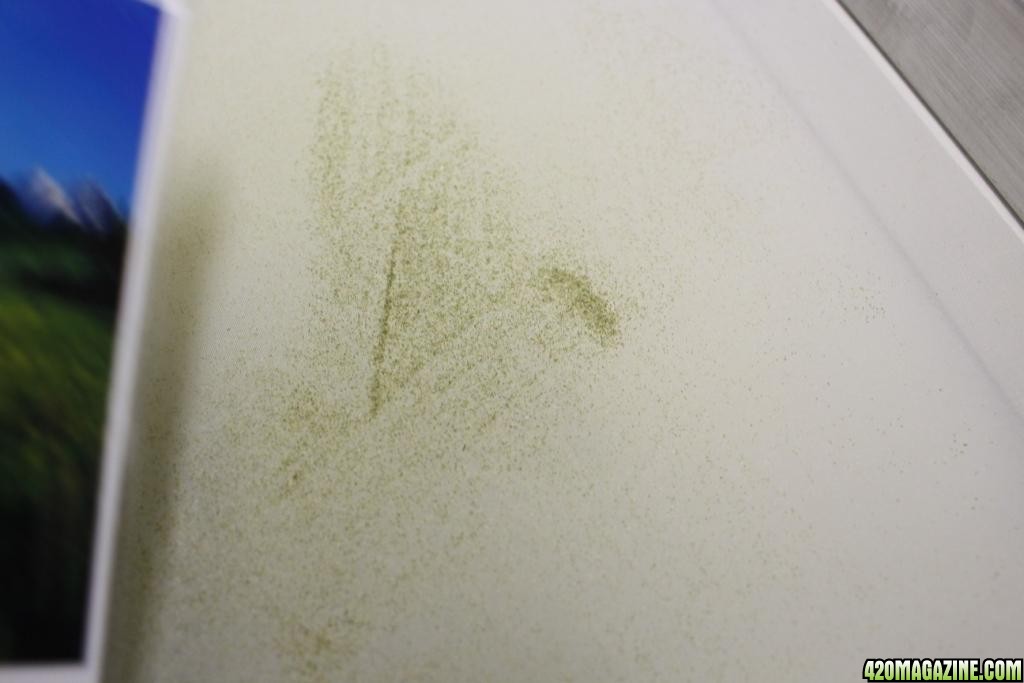
Almost everything on this screen will be passed, and here is where you use the scope to determine what is trash and then stop working, the less material passed the better...I would pull this when it is about 90% contaminate...
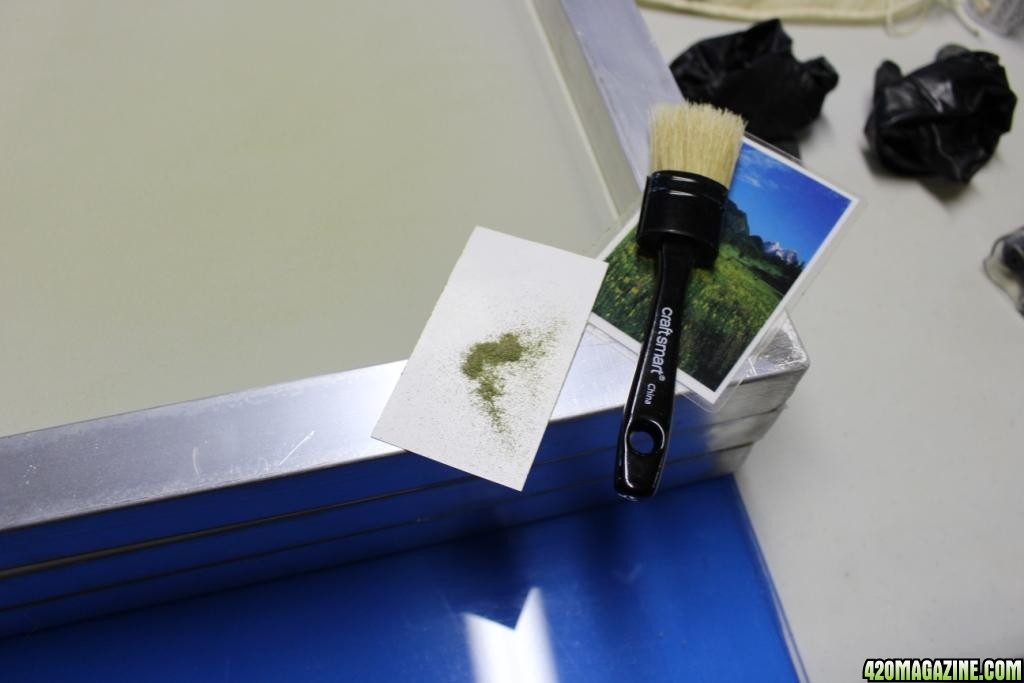
We pull this layer and expose the 3rd screen (160 LPI), which is covered in a layer that should be about 50% contaminate.
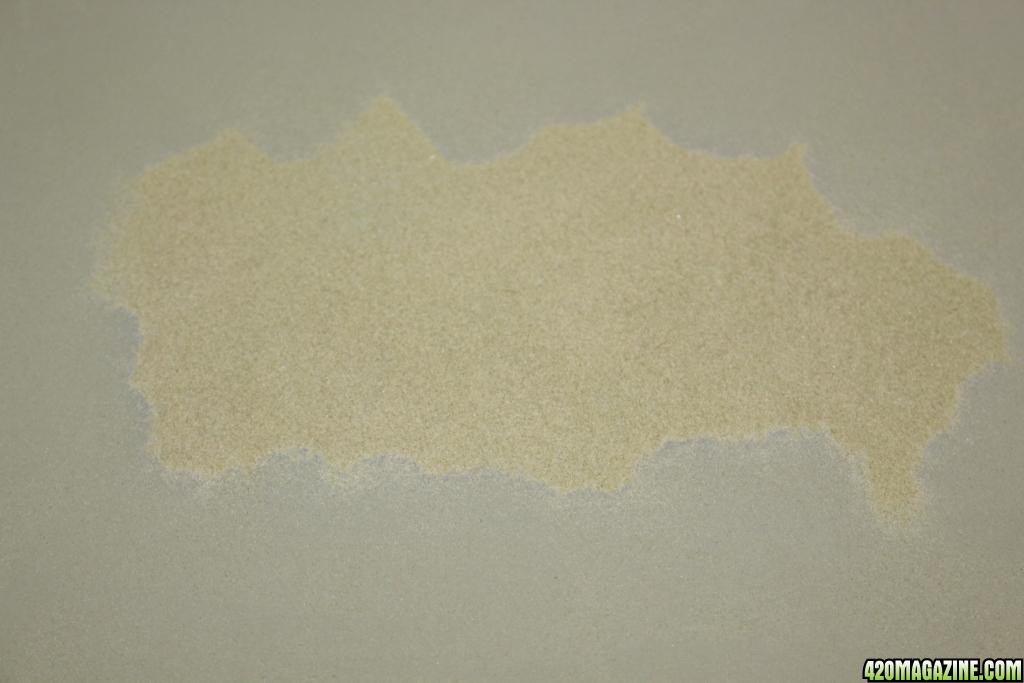
This ratio can swing up or down based on the starting material, how rough you handle it, how much you break it up, if you push it against the top screen (which both lessens the life of the screen and clogs it with crushed and smeared resin heads...don't be that person).
At this point I would use a brush or a card to collect all the resin into a few piles on this screen (160 LPI) and slowly begin to card it over that area of the screen.
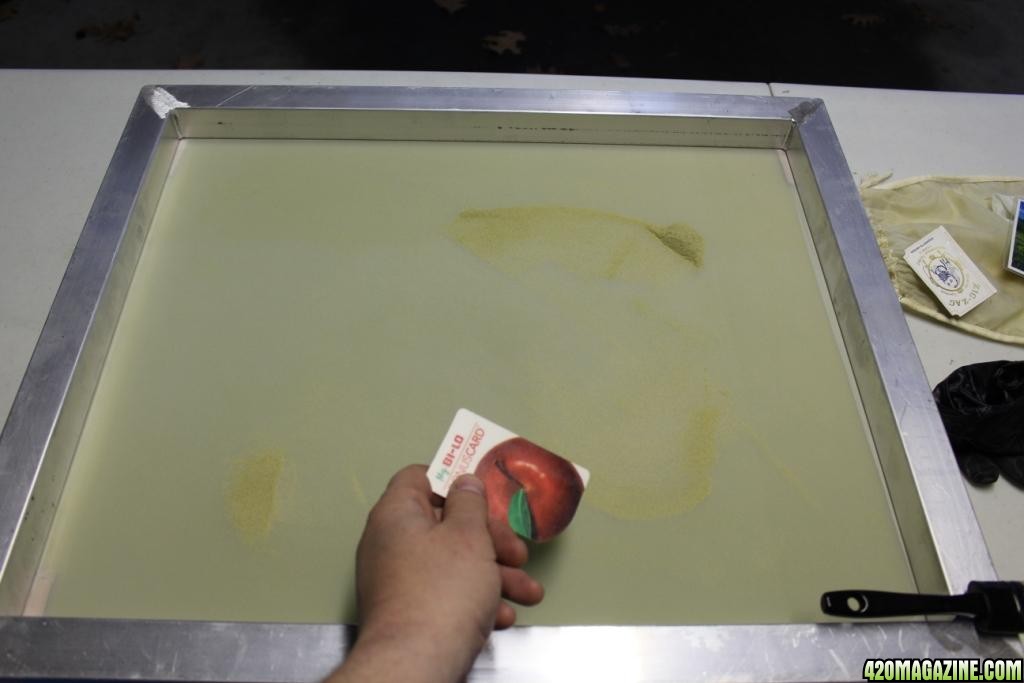
I have several cards of paper and plastic in different thicknesses and flexibility, I also have 2 brushes, 1 for the top screens and 1 for the bottom screens...that way I keep the contaminate off the bottom screens by only using the dedicated "heads" brush.
The top screen (160 LPI/appx 90 micron) takes some work but if you have a cultivar with large trichomes, this is where you will find them. The next screen is 230 LPI which is roughly a 60 micron. This is the "carding" screen, it is where you will use the cards...
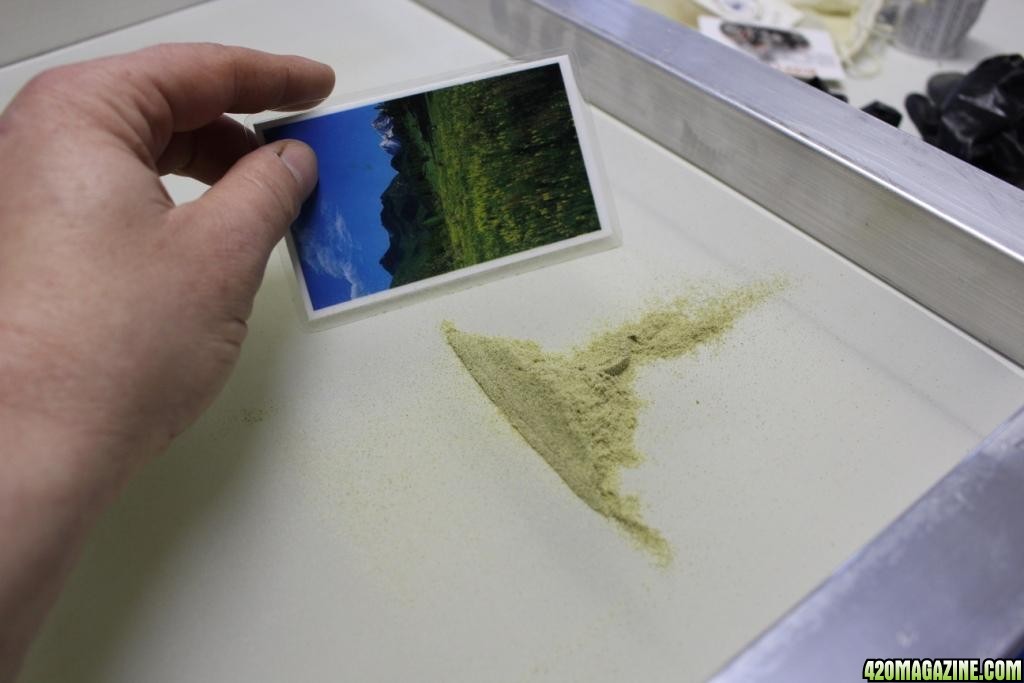
So this process can take a few hours...needless to say, it does not transfer to pictures well! I again, use my microscope, to check whats happening in my piles as I GENTLY card the heads until I have piles of contaminate and heads. The bad stuff goes into the "secondary bowl" and the heads are collected when they are at the purity level you desire...
The final screen (230 LPI) is where you can spend several hours...you can take material off the the 160 and clean it up here if you want...The best and most mature heads will roll along this mesh, allowing the dust, debris, hairs, stalks etc to fall off and pushed through. After a few hours, days, weeks etc you can purify your product down to the very best heads that will melt and drip like water when touched with flame.

I hope you enjoyed, leave some questions and comments and I will do my best to answer them!

To start, you will need some screens, some starting material (flower/trim/kief), magnifying glass of some kind (I use a lighted pocket microscope), at least one brush, card, etc to move the material around. As you can see, I use a plethora of different cards and brushes for different applications.
You obviously will need some sort of vessel to collect the resin after the process is complete (small glass jar, medtainer etc), and a vessel to collect the "used material" (I like to use the same SS bowl...)
I also have some extra mesh bags from my days brewing beer (hops bags) these work good if you would like to get every last bit out, I prefer to bubble or oil my second run material.
Lets talk screens for a minute...
I ordered mine online and specified what i wanted made and got them for about 1/3 the costs of "well known retailers"...I would however, like to give a huge SHOUTOUT to Bubbleman for all the help in perfecting my processes and his videos online are amazing to assist you if you so choose. I have 4 screens that are measured in Lines Per Inch (LPI), some people use Micron and that works too but mine are LPI, so that is what i will use here...
I have a "work screen" (86 LPI/appx 170 micron) that I start all my material on.
Followed by a second contaminate screen (110 LPI/ap 140 micron) to pull hair, leaf that somehow got passed, dust etc; next are the "catch screens" and both end up with gold on them.
All of this needs to be worked through with cards and brushes. A quick check with the scope and you will see how much is really trichomes or just contaminate.
This is dependent on how much you work the material to start with...but lets not get ahead of ourselves just yet...
So here we go...I started with 100 grams of bone dry material
and pushed all of it to one side to start working about a big handful at a time...
after pulling most of the trash out (big fan leaves that slipped by, sticks from the flowers and small branches that were doomed to hash processing)
We lightly breakup the bigger buds and get everything down to what I consider "rough pipe material"...
This all gets lifted and dropped repeatedly in various ways, but always very lightly and never pressed against the top screen (86 LPI)
You do this over and over again for about half the material, tossing each handful into the "trash bowl" after working it a few, half a dozen times maybe, over this screen...then you push it all the the left and repeat on the opposite side of your screen...one handful at a time, always very gentle and never too much at a time, less is more...
Once you are finished with however much material you have, or can handle at a time on your screens...You get everything off...
And then you start using the various cards and brushes at your disposal to GENTLY assist the trichomes through the next screen (110 LPI).
Almost everything on this screen will be passed, and here is where you use the scope to determine what is trash and then stop working, the less material passed the better...I would pull this when it is about 90% contaminate...
We pull this layer and expose the 3rd screen (160 LPI), which is covered in a layer that should be about 50% contaminate.
This ratio can swing up or down based on the starting material, how rough you handle it, how much you break it up, if you push it against the top screen (which both lessens the life of the screen and clogs it with crushed and smeared resin heads...don't be that person).
At this point I would use a brush or a card to collect all the resin into a few piles on this screen (160 LPI) and slowly begin to card it over that area of the screen.
I have several cards of paper and plastic in different thicknesses and flexibility, I also have 2 brushes, 1 for the top screens and 1 for the bottom screens...that way I keep the contaminate off the bottom screens by only using the dedicated "heads" brush.
The top screen (160 LPI/appx 90 micron) takes some work but if you have a cultivar with large trichomes, this is where you will find them. The next screen is 230 LPI which is roughly a 60 micron. This is the "carding" screen, it is where you will use the cards...
So this process can take a few hours...needless to say, it does not transfer to pictures well! I again, use my microscope, to check whats happening in my piles as I GENTLY card the heads until I have piles of contaminate and heads. The bad stuff goes into the "secondary bowl" and the heads are collected when they are at the purity level you desire...
The final screen (230 LPI) is where you can spend several hours...you can take material off the the 160 and clean it up here if you want...The best and most mature heads will roll along this mesh, allowing the dust, debris, hairs, stalks etc to fall off and pushed through. After a few hours, days, weeks etc you can purify your product down to the very best heads that will melt and drip like water when touched with flame.
I hope you enjoyed, leave some questions and comments and I will do my best to answer them!




